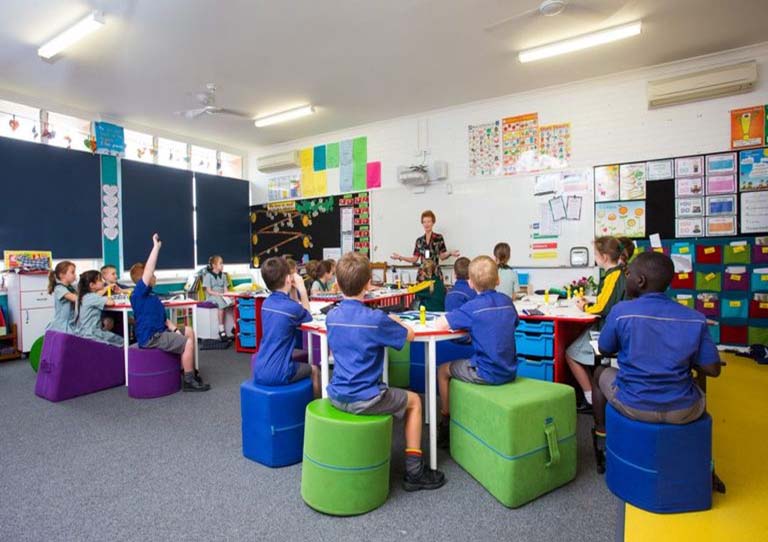Classrooms are typically one-size-fits-all spaces, designed with one focal point and function in mind. Instructional designer Bryan Dean, who goes by the title of “space futurist”—for learning space, not outer space—would like to eradicate this line of thought. Dean strongly believes that educational spaces need to suit all types of learners, not just the most common ones. He is the lead designer for the Universal Design for Learning (UDL) project at Oakland Schools in Michigan; he has also facilitated a UDL seminar at Harvard University. Here, Dean talks with ELLE Decor about the importance of adaptive spaces, and how true universal design goes beyond the physical space.
What does Universal Design for learning mean, and why is it important?
Bryan Dean: UDL is about understanding that every learner has inherent variability in how they learn, what motivates them to learn, and how they process and synthesize their learning. It understands that variability of learners is jagged, and that designing only for the middle ensures that no one gets full access. UDL is about designing opportunities for learning and invitations to discover self-empowerment and self-efficacy. In order for that to happen, lesson planning, curriculum, pedagogy, and classroom culture all become part of UDL as well as learning spaces. UDL is about designing a flexible and agile space that contains options and resources for all students to utilize.

How do you design specifically for children?
Children need spaces that foster creativity, critical thinking, collaboration, connectivity, community, and communication. And they need all these things in safe spaces where they have permission to fail at them, reflect upon them, and try them again. How do you do that with space specifically? You scaffold the purpose of the spaces, and you create physical spaces that allow for that reflection by providing individual and group space. You take into account student voice and choice, what resources are available, and how the learner is reflected in the space.
How do the students benefit from these UDL spaces? Do some age groups benefit more than others?
Students in a UDL environment benefit in a multitude of ways. They benefit from self-discovery, from learning self-regulation, and from learning how to advocate for their needs and not just their desires or wants. Learners of all ages can learn these things—it may look different in first grade than it does in 10th grade, and the complexity of it may change, but all students benefit from an accessible environment that reflects them and meets their specific learning needs.
What design elements must you always include in a UDL space?
For a UDL-infused space, it’s all about options. Options for flexibility in seating. Options for acoustics, options for movement, options for tactile and emotional regulation, options for technology, and options for creativity.
Spaces need to have multiple ways to represent information. This could be visual learning cues along with technology and presentations. It could be a space that is designed with multiple stations for auditory, visual, and kinesthetic processing of information. Spaces also need to have multiple ways for students to show what they have learned and for them to synthesize their learning—spaces for presentation and for group collaboration, furniture that is easily configured and responsive to the needs of the learners. They need furniture and seating that is light, like soft seating, and has multiple purposes, like flip-top writable surface tables.
Spaces also need to be engaging. They have to have room for movement, for students to have options to stand, sit, rock, or crouch. Spaces need to have vibrancy and engaging palettes that are age-appropriate. Spaces need to have a sense of biophilia, where the natural world is reflected within the classroom. Finally, learning spaces need a sense of fun and excitement. They shouldn’t feel institutional. Learning shouldn’t be a chore.
Is there anything else you’d like to share about UDL?
In the end, UDL is about the intentional design of learning spaces to meet the needs of all learners. It’s intentional design to match the learning space to the learning outcomes and build classroom communities of acceptance. And it puts the learner at the center of the design.



















Your Message